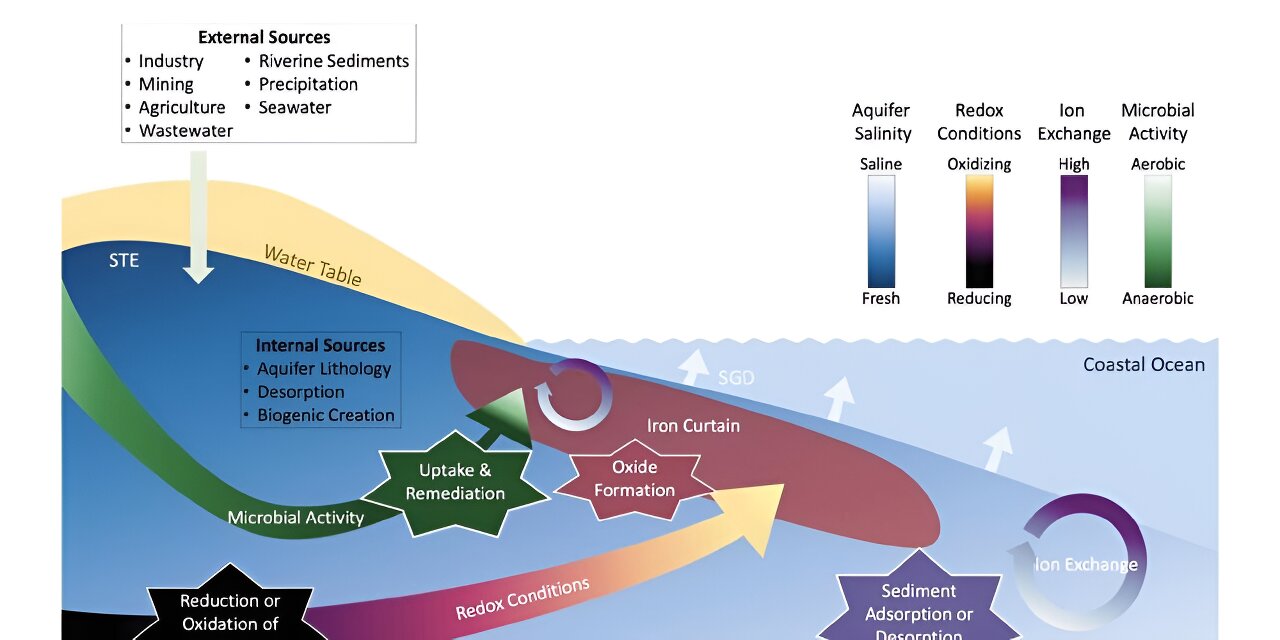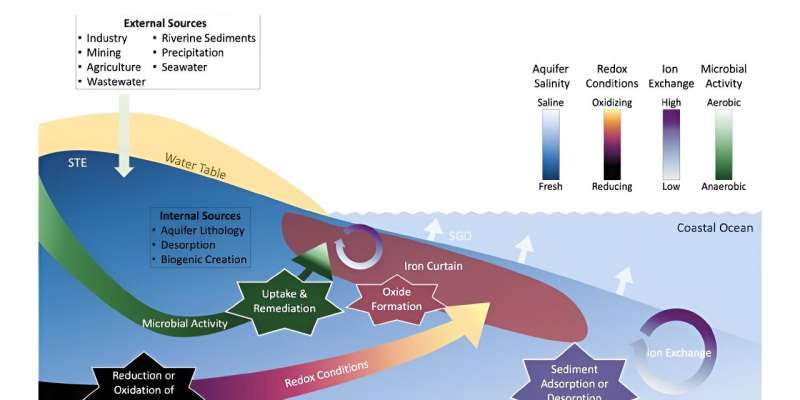

There is a high risk of increased metal emissions from coastal areas in the future. In a new model published in Limnology and Oceanography Letters, researchers from the University of Gothenburg show that climate change and overpopulation can flush out heavy metals that have long been buried in sediments, and where on Earth the risk of this is greatest.
Coastal sediments and soils have a good capacity to bind metal pollutants. Low oxygen levels and slow decomposition environments bury the metals and protect surrounding, often sensitive, marine environments from harm.
However, climate change and direct human impact can lead to the release of metals into the sea. A slightly higher salinity of seawater or more oxygen near the seabed can increase the uptake of metals by living organisms, where they can disrupt both reproduction and natural behaviors.
“We have analyzed how metals behave in coastal groundwater in the light of human-driven changes to the climate and increased metal emissions due to human activities along the coast,” says Tristan McKenzie, researcher in marine chemistry at the University of Gothenburg.
Human impact
Using data on population density, water treatment rates, mining activities and more, McKenzie and his research colleagues around the world have created a model that estimates where the risk of increased metal discharges into the ocean is greatest based on human activity. This has then been combined with the impact of climate change on coastal environments in the form of sea level rise, changes in precipitation, storms and rising water temperatures.
The model suggests that the greatest overall risks are in the tropics, which cover one third of the world’s coastline. Four percent of the world’s coasts fall into the highest risk category and include areas with very high population density, acid sulfate soils, high groundwater discharge to the sea, little water purification and ongoing mining less than 10 kilometers from the coast.
Highest risk in Southeast Asia
“We see that the coasts of Southeast Asia are in trouble. They are experiencing rapid population growth, inadequate water treatment, and climate change is expected to hit these areas hard, according to IPCC projections. Our model is useful for future research on, and action against, metal pollution,” says McKenzie.
In particular, the study points to coastal groundwater flows as a previously overlooked source of ocean pollution. Underground water flows can carry metals out to sea.
“Groundwater discharge can be as important as a river flowing into the sea. Metals from landfills or industrial sites can seep through the soil and then these metals and other pollutants can be transported elsewhere by groundwater. It is important to consider groundwater when looking at the risks of metal spills into the sea,” says McKenzie.
More information:
Tristan McKenzie et al, Metals in coastal groundwater systems under anthropogenic pressure: a synthesis of behavior, drivers, and emerging threats, Limnology and Oceanography Letters (2024). DOI: 10.1002/lol2.10413
Provided by
University of Gothenburg
Citation:
New model points to increased coastal metal emissions (2024, September 19)
retrieved 20 September 2024
from https://phys.org/news/2024-09-coastal-metal-emissions.html
This document is subject to copyright. Apart from any fair dealing for the purpose of private study or research, no
part may be reproduced without the written permission. The content is provided for information purposes only.